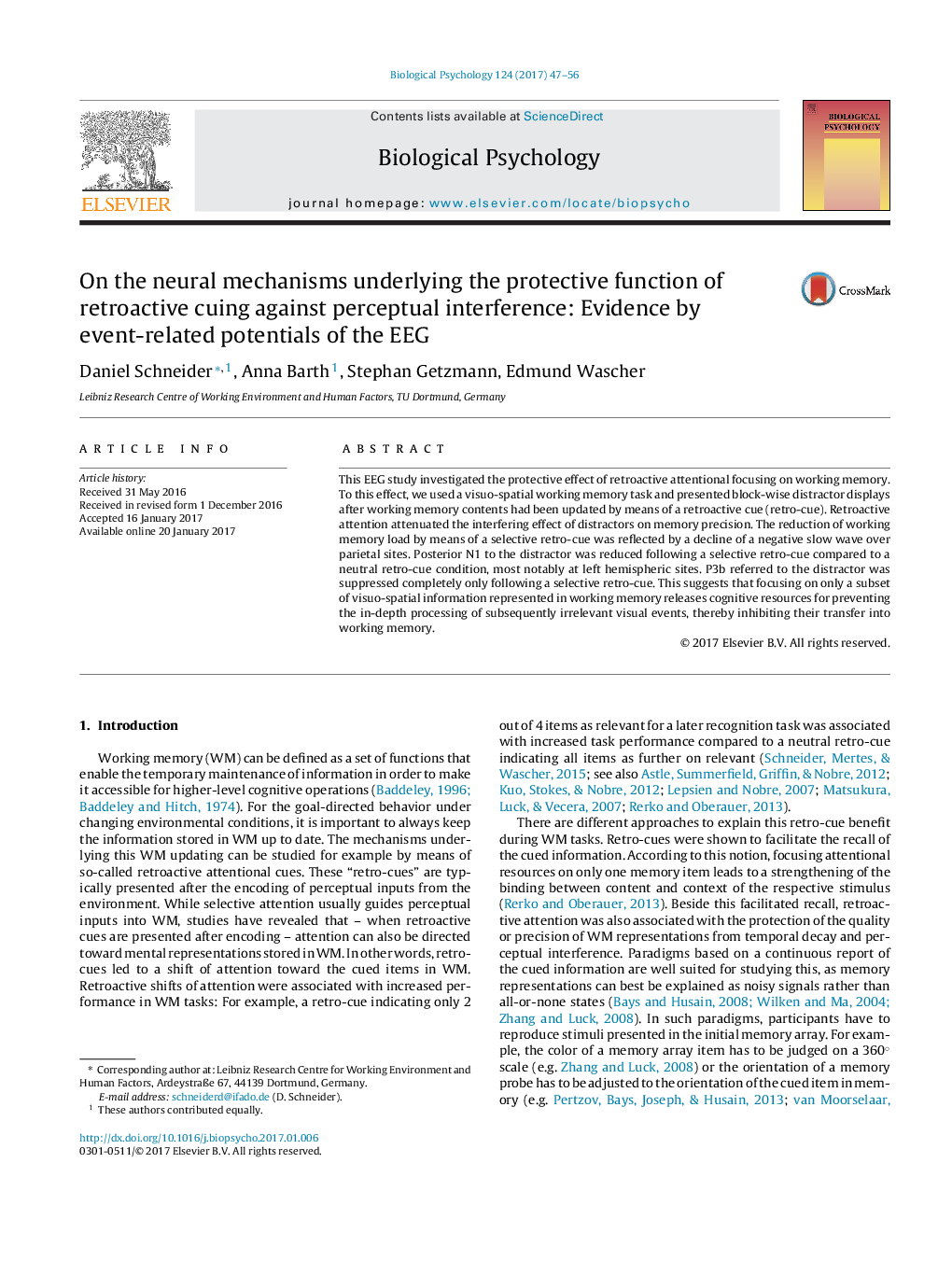| Article ID | Journal | Published Year | Pages | File Type |
|---|---|---|---|---|
| 5040458 | Biological Psychology | 2017 | 10 Pages |
â¢Retro-cues protect working memory precision against interference/distraction.â¢Retro-cues lead to lower posterior N1 amplitudes referred to distractor processing.â¢P3b referred to the distractor display is suppressed following a retro-cue.â¢ERP results reveal that retro-cues inhibit working memory encoding of distractors.
This EEG study investigated the protective effect of retroactive attentional focusing on working memory. To this effect, we used a visuo-spatial working memory task and presented block-wise distractor displays after working memory contents had been updated by means of a retroactive cue (retro-cue). Retroactive attention attenuated the interfering effect of distractors on memory precision. The reduction of working memory load by means of a selective retro-cue was reflected by a decline of a negative slow wave over parietal sites. Posterior N1 to the distractor was reduced following a selective retro-cue compared to a neutral retro-cue condition, most notably at left hemispheric sites. P3b referred to the distractor was suppressed completely only following a selective retro-cue. This suggests that focusing on only a subset of visuo-spatial information represented in working memory releases cognitive resources for preventing the in-depth processing of subsequently irrelevant visual events, thereby inhibiting their transfer into working memory.
